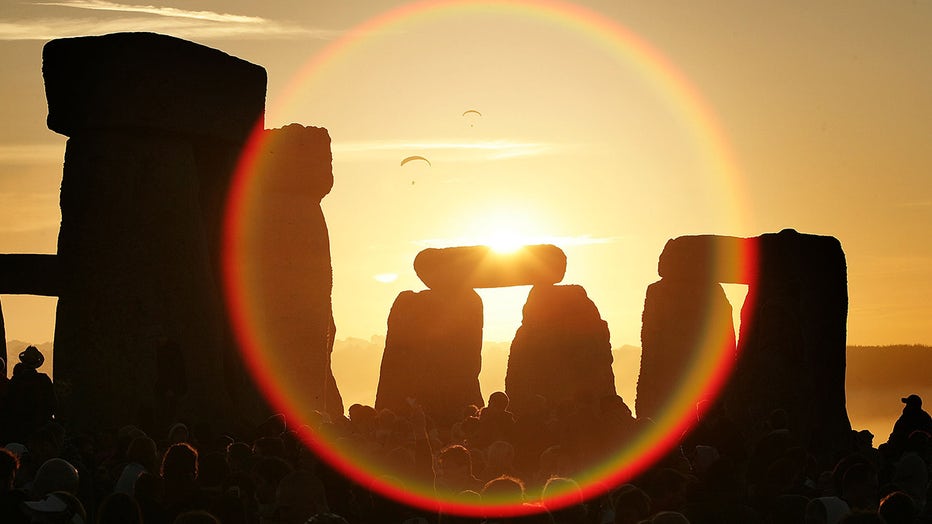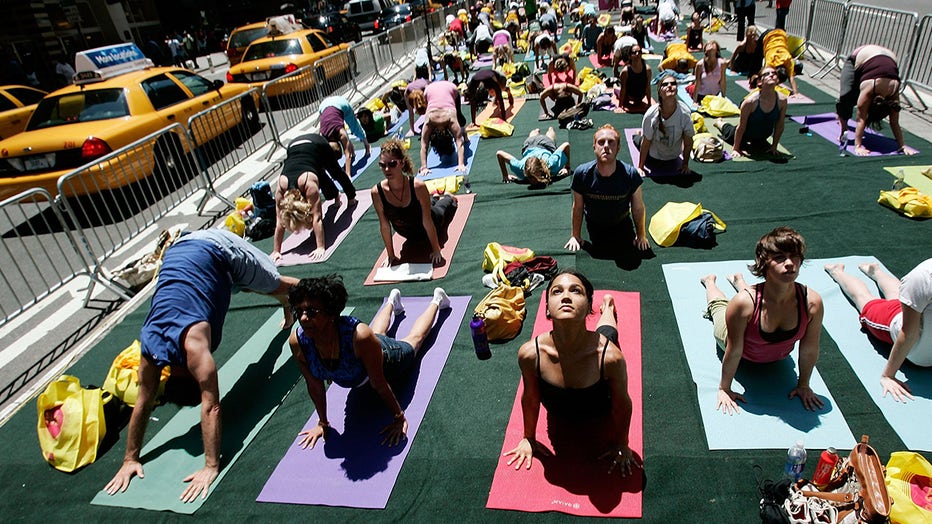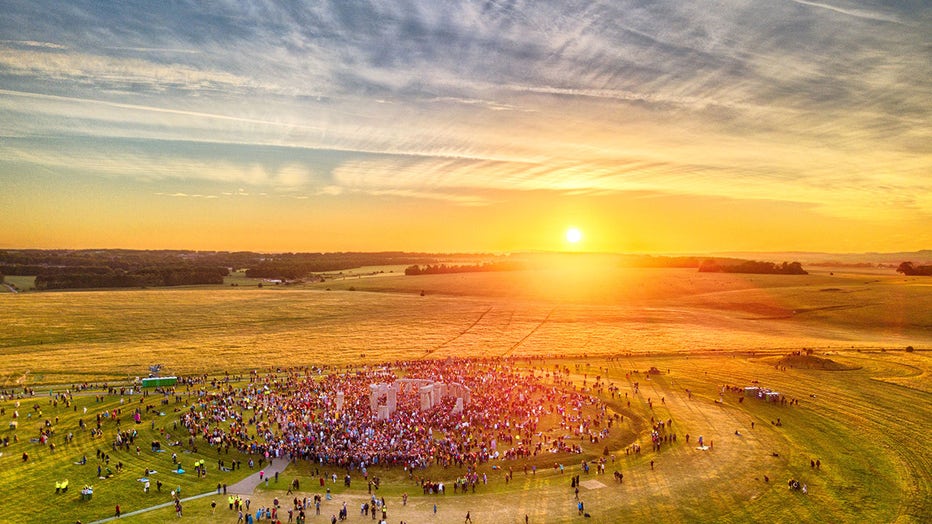Summer solstice 2021: Why it’s the start of season, longest day of year
LOS ANGELES - While it may already feel like summer, the first official day of the season officially kicks off Sunday, when many cultures from around the world celebrate and recognize the significance of the summer solstice.
But what is the summer solstice and why is it the longest day of the year? Here are some facts about the significant day.
What is the summer solstice?
The summer solstice, which also marks the onset of summer, occurs when one of the Earth’s poles has its maximum tilt toward the sun.
This occurs twice yearly, once in each hemisphere.
RELATED: PHOTOS: Saharan dust brings beautiful skies to Florida
For example, the summer solstice happens between June 20-22 in the northern hemisphere and between December 21-22 in the southern hemisphere (which the U.S. calls the winter solstice).
The longest day of the year
The summer solstice is also considered the longest day of the year — the day with the longest period of sunlight hours.

WILTSHIRE, UNITED KINGDOM - JUNE 21: People watch the midsummer sun as it rises over the megalithic monument of Stonehenge on June 21, 2005 on Salisbury Plain, England. Crowds gathered at the ancient stone circle to celebrate the Summer Solstice; the
This is partly because it’s when the sun must travel its longest path, reaching its highest and northernmost point in the sky, thus making the sun take longer to rise and to set.
In addition, Earth’s axis is tilted 23.5˚ with respect to the sun, but on the summer solstice, the north pole is tilted almost directly toward the sun — the most direct angle of the year.
RELATED: Another hot and dry summer predicted for the Pacific Northwest
Meanwhile, the south pole is tipped away from the sun, giving the northern hemisphere long hours of daylight.
"The northern summer solstice is an instant in time when the north pole of the Earth points more directly toward the Sun than at any other time of the year," NASA wrote.

Yoga enthusiasts from across the country participate in the annual "Summer Solstice in Times Square Yoga-thon" as taxis drive past June 21, 2007 in New York City. The summer solstice is the first official day of summer and the longest day of the year
In fact, the solstice means "sun stands still" in Latin, NASA noted.
"Because the sun is highest in the sky on this day, you’ll notice that your shadow (at local — or solar — noon, not clock-time noon) is the shortest that it will be all year," the Farmers Almanac explained.
When is the summer solstice 2021?
The June solstice will occur on Sunday, June 20, 2021 at 11:32 p.m. ET.
This year, the solstice also falls on Father’s Day!
According to the Farmer’s Almanac, the timing of the June solstice is not based on a specific calendar date or time — it all depends on when the sun reaches its northernmost point from the celestial equator.
RELATED: Rope tornado stretches across sky in Canada
Therefore, the solstice won’t always occur on the same day. Currently, it shifts between June 20-22.

The summer solstice sun breaks through the stones at Stonehenge as observed by thousands of revellers on June 21, 2019 in Amesbury, United Kingdom. (Photo by Chris Gorman/Getty Images)
The astronomical first day of summer, however, always coincides with the summer solstice, which is why the official first day of summer varies.
Americans can experience more than 14 hours of sunlight on the summer solstice. Use The Farmer’s Almanac offers a tool to determine how many hours of sunlight a particular location will get.
Stonehenge and the summer solstice
Some historians point to Stonehenge, an ancient monument in Wiltshire, England as evidence that humans once used the June solstice as a way to organize their calendars and start counting the days of the year.
According to English Heritage, a charity organization that cares for over 400 historic buildings, monuments and sites, the sun rises at Stonehenge on the solstice behind the Heel Stone in the northeast part of the horizon and its first rays shine into the heart of Stonehenge.
RELATED: Saharan dust coming to Florida: Why it can make you think you have this virus
"The sarsen stones, put up in at the center of the site in about 2500 BC, were carefully aligned to line up with the movements of the sun," English Heritage explained. "The whole layout of Stonehenge is therefore positioned in relation to the solstices, or the extreme limits of the sun’s movement."
Solstice celebrations and rituals
In ancient times, the date of the June solstice was used to organize calendars and as a marker to figure out when to plant and harvest crops. Traditionally, this time of year was also popular for weddings, according to Time and Date.
In ancient Gual, which encompasses modern-day France, the Feast of Epona was celebrated with bonfires to mark the solstice or midsummer.
RELATED: Fireworks returning to Disney theme parks next month
In ancient China, the summer solstice was observed to celebrate the Earth, femininity and the "yin" forces.
The day also signifies a turning point during the year, when the days start getting shorter once again. The shift is associated with change, nature and new beginnings, which is why many festivals and celebrations still occur on the day.
In Ottawa, Canada’s Ontario province, the Ottawa Summer Solstice Indigenous Festival occurs. The event focuses on summer solstice traditions from the First Nations people, according to Space Tourism Guide.
The Secret Solstice Festival in Reykjavik, Iceland is not so secret anymore, but features music and entertainment. The event has been postponed until 2022 due to the COVID-19 pandemic.
RELATED: Travel to parts unknown with free movies, shows this summer
Meanwhile, in northern European countries like Sweden, Denmark, Norway and Finland, Midsummer is a festive and major celebration to mark the summer months.
"In the Baltic states, Estonia, Latvia, and Lithuania, Midsummer is an occasion to travel to the countryside and connect with nature. Many people light bonfires and stay up all night drinking, singing, and dancing," Time and Date wrote.
While thousands of people gather at Stonehenge for the occasion, parts of the United States also take part in the celebration with events focused on the theme of the summer solstice.
Watch the summer solstice sunrise and sunset
Sunset and sunrise will be live-streamed for free on English Heritage’s social media channels and will include exclusive interviews and music. You can watch it here.

